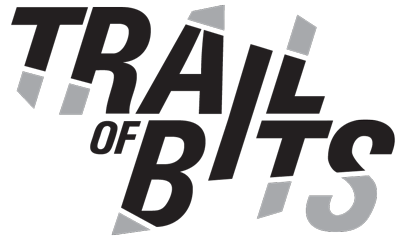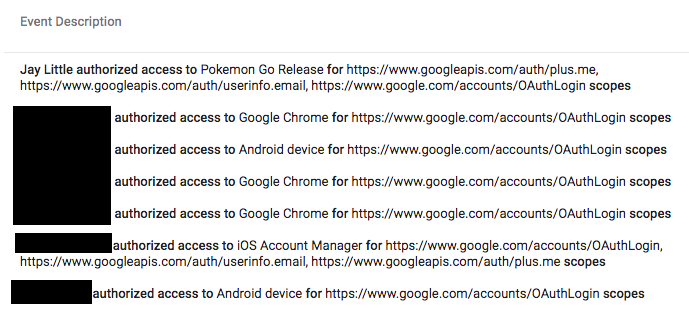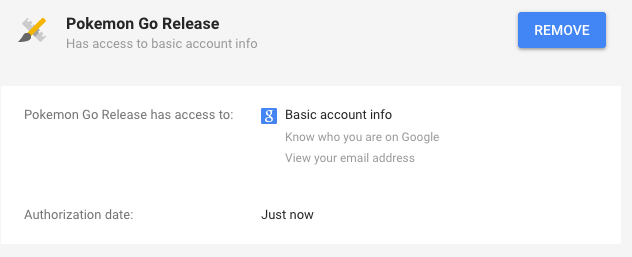Why I didn’t catch any Pokemon today
tl;dr While the internet went crazy today, we went fact finding. Here are our notes on Pokemon Go’s permissions to your Google account.
Here’s what Jay and I set out to do at around 6pm today:
- Find what permissions Pokemon Go is actually requesting
- Investigate what the permissions actually do
- Replicate the permissions in a test app
Our first instinct was to go straight to the code, so we began by loading up the iOS app in a jailbroken phone. The Pokemon Go app uses jailbreak detection to prevent users with modified devices from accessing the game. As we have commonly found with such protections, they were trivial to bypass and, as a result, afforded no real protection.
Niantic issues an OAuth request to Google with their scope set to the following (note: “scope” determines the level of access that Niantic has to your account and each requested item is a different class of data):
The OAuthLogin scope stands out in this list. It is mainly used by applications from Google, such as Chrome and the iOS Account Manager, though we were able to find a few Github projects that used it too.
It’s not possible to use this OAuth scope from Google’s own OAuth Playground. It only gives various “not authorized” error messages. This means that the OAuth Playground, Google’s own service for testing access to their APIs, is unable to exactly replicate the permissions requested by Pokemon Go.
It might be part of the OAuth 1.0 API, which was deprecated by Google in 2012 and shut down in 2015. If so, we’re not sure why Pokemon Go was able to use it. We checked, and accounts that migrate up to the OAuth 2.0 API are no longer able to access the older 1.0 API.
We found changelogs in the source code for Google Chrome that refer to this OAuth scope as the “Uber” token where it is passed with the “IssueUberAuth” GET parameter.
It does not appear possible to create our own app that uses this OAuth scope through normal or documented means. In order to properly test the level of access provided by this OAuth token, we would probably need to hook an app with access to one (e.g., via a Cydia hook).
The Pokemon Go login flow does not describe what permissions are being requested and silently re-enables them after they’ve been revoked. Further, the available documentation fails to adequately describe what token permissions mean to anyone trying to investigate them.
It’s clear that this access is not needed to identify user accounts in Pokemon Go. While we were writing this we expected Niantic to ultimately respond by reducing the privileges they request. By the time we hit publish, they released a statement confirming they will.
For once, we agree with a lot of comments on Hacker News.
This seems like a massive security fail on Google’s part. There’s no reason the OAuth flow should be able to request admin privileges silently. As a user, I really must get a prompt asking me (and warning me!). — ceejayoz
We were able to query for specific token scopes through Google Apps for Work but we have not found an equivalent for personal accounts. Given that these tokens are nearly equivalent to passwords, it seems prudent to enable greater investigation and transparency about their use on all Google accounts for the next inevitable time that this occurs.
By the time we got this far, Niantic released a statement that confirmed they had far more access than needed:
We recently discovered that the Pokémon GO account creation process on iOS erroneously requests full access permission for the user’s Google account. However, Pokémon GO only accesses basic Google profile information (specifically, your User ID and email address) and no other Google account information is or has been accessed or collected. Once we became aware of this error, we began working on a client-side fix to request permission for only basic Google profile information, in line with the data that we actually access. Google has verified that no other information has been received or accessed by Pokémon GO or Niantic. Google will soon reduce Pokémon GO’s permission to only the basic profile data that Pokémon GO needs, and users do not need to take any actions themselves.
After Google and Niantic follow through with the actions described in their statement, this will completely resolve the issue. As best we can tell, Google plans to find the already issued tokens and “demote” them, in tandem with Niantic no longer requesting these permissions for new users.
Thanks for reading and let us know if you have any further details! Please take a second to review what apps you have authorized via the Google Security Checkup, and enable 2FA.
Update 7/12/2016: It looks like we were on the right track with the “UberAuth” tokens. This OAuth scope initially gains access to very little but can be exchanged for new tokens that allow access to all data in your Google account, including Gmail, through a series of undocumented methods. More details: https://gist.github.com/arirubinstein/fd5453537436a8757266f908c3e41538
Update 7/13/2016: The Pokemon Go app has been updated to request only basic permissions now. Niantic’s statement indicated they were going to de-privilege all the erroneously issued tokens themselves, but if you want to jump ahead of them go to your App Permissions, revoke the Pokemon Go access, signout of the Pokemon Go app, and then sign back in.


